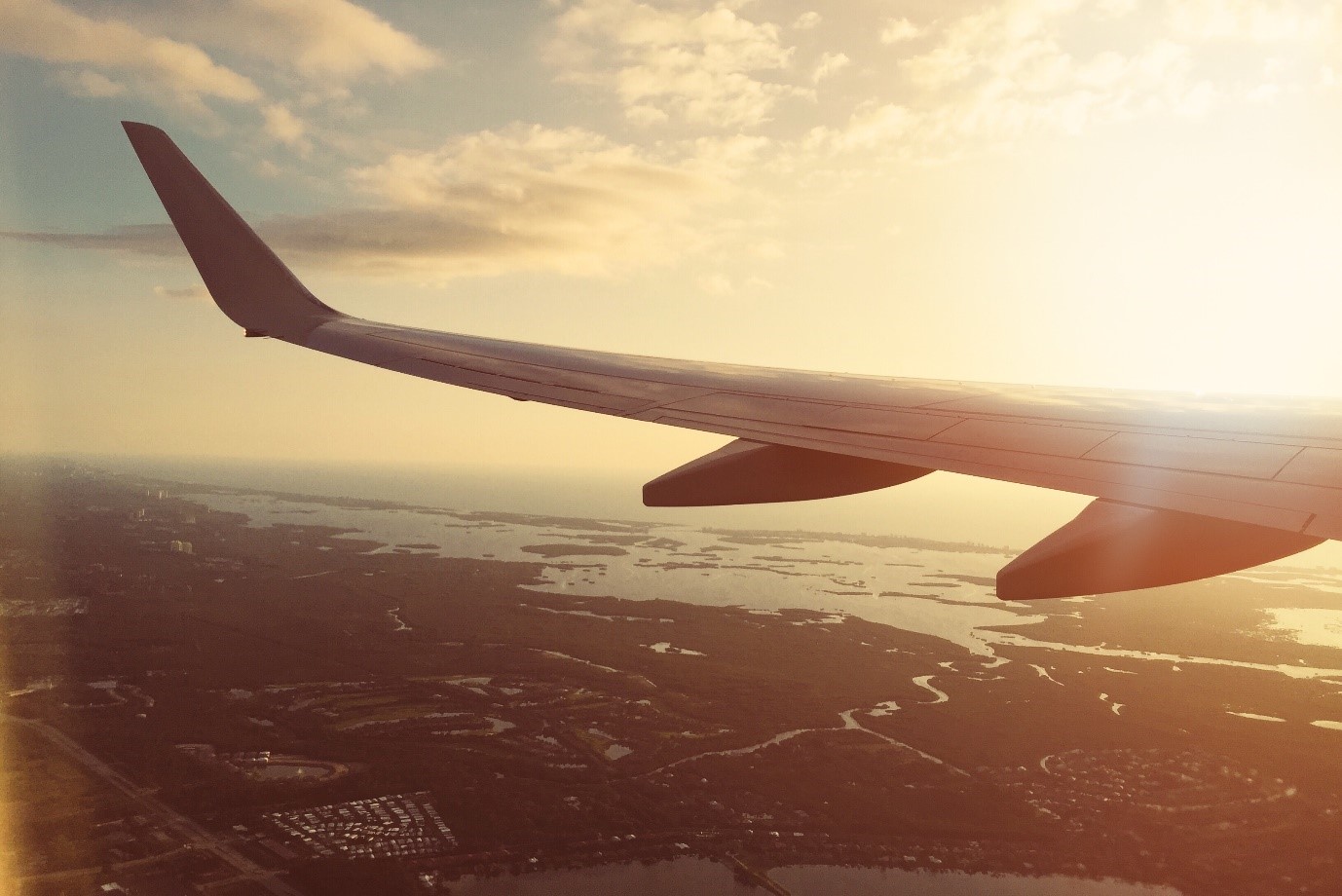Senior air travel: Getting You Where You Need to Go
Traveling through an airport is stressful at any age, but what’s it like for seniors to travel? What help is already out there?

In today’s world, we fly frequently. Lower airfares, loved-ones living abroad and professional obligations are all factors that make flying a modern necessity.
Even though flying is more accessible than it used to be, it’s also more stressful for everyone. For someone with reduced mobility, the stress is even greater, as you’ll likely need a lot more time and assistance than other passengers. Some seniors might not fly at all because of the anxiety that the prospect of flying brings. However, there really is no reason to worry.
Not having the option to fly takes away a lot of our freedom. So, what can be done to help people who need a little bit more patience and guidance? What do seniors struggle with? What help is already out there?
We asked major International Airport Schiphol in Amsterdam about their experience with the matter.
Read on to find out what they said!
Table of contents:
What kinds of issues do seniors encounter when flying?
Flying with Dementia: is it wise? Or even possible?
What was flying like when today’s seniors were younger?
What kinds of issues do seniors encounter when flying?

Schiphol Airport is the main international airport in the Netherlands; it is Europe’s third busiest airport and everyone who has ever travelled to or from Schiphol knows that it can be a confusing place. We asked the security company that provides services for less mobile passengers what their customers struggle with the most, and how they help.
If traveling by plane is something you’ve avoided because you’re worried about the stress of it all, you can finally relax!
The service Axxicom Airport Caddy is there to help the least mobile among us. Passengers with Reduced Mobility (or PRM), are guided to and from airplanes of all airlines. This service is provided by the airport, for its passengers. Axxicom told us that the most common users of their service are seniors; however their service is available for anyone with reduced mobility. Age is not a factor.
Axxicom explained that since 2007, all airports are legally obliged to offer a service for passengers with reduced mobility. Before 2007 it was the airlines that needed to offer these services for their own passengers. It’s good to know that this is an international law, and all international airports have to offer this service for their passengers. So, what is it that Axxicom does for their customers?
“The assistance provided is in accordance with the passenger’s needs, from the start to the end. Meaning from the beginning of their airport experience to the end of it. “ Axxicom Airport Caddy
“Travel is something that everyone should be able to do. When it is not possible to travel independently due to mobility restrictions, we gladly help people on their journey. The airline is informed of the kind of assistance that’s required when the person books their ticket. We provide help to get to the gate, but also to their seat inside the plane. Our employees are trained to take passengers to their boarding gate as quickly and safely as possible. There are also especially trained staff members to lift passengers from their wheelchair into their seats. After booking, the airline will inform us of the flight booked and the assistance requested. This way, we know when we can expect each passenger and we ensure that we have enough staff ready to allow everyone to board their flights on time. We notice that passengers are particularly worried about getting to their flight on time and whether they are taken to the correct gate. Because we know their flight numbers, we can use them to keep an eye on the departure times and gates so we can reassure them. After checking their suitcases in, passengers can wait in our special waiting area. The waiting area is equipped with a service desk and a host is present to answer any questions the passenger might have.”
What kind of service is provided the most?
- Departing passengers: assistance to the gate or from the gate to the airplane.
- Arriving passengers: assistance through passport control, luggage pick-up and all the way to arrivals or a taxi.

The people that work for Axxicom are trained in several ways in addition to general airport training. Special focus is placed on safety and the layout of the airport, but employees also receive training in hosting and dealing with reduced mobility. Some employees receive special training in how to lift a passenger from their wheelchair into their airplane seat and vice versa.
Axxicom has noticed a steady growth in demand for their services in the last few years, which is very positive, as this means that people with reduced mobility feel safe and supported enough to travel by airplane. Even if a passenger is not able to climb up or down stairs to board an airplane, Axxicom can easily help. They make sure passengers are safely set on their way.
Not everybody is aware that these services exist, but a lot of people do book these services in advance, Axxicom explains.
And the cherry on top is that these services are absolutely free of charge!
And the cherry on top is that these services are absolutely free of charge! You just have to make sure you inform your airline of your needs and they will guide you from that point on.
Axxicom advises passengers to try to start the journey as relaxed as possible and indicate what they can and cannot do. This way they can tailor their service to the passengers’ needs and help in the best way possible.
Flying with Dementia: is it wise? Or even possible?
Dementia and traveling. This is a subject that touches many of us in a personal way. Dementia can present itself in different ways, all of which make traveling much more difficult. Dementia is common among senior citizens, and it’s something that many of us will have to face if we get to an advanced age. Memory loss, difficulties with communication and problem solving are all ways that dementia can present itself. Therefore, we can understand how stressful it must be to be in a chaotic environment such as an airport.
Last year it was announced that London Heathrow is set to become the world’s first Dementia-Friendly Airport. That means that all 76,000 staff members are trained to help passengers with a “hidden disability” such as dementia. Other airports, like London Gatwick, have started working with a key cord system: people who think they need a bit more time or patience wear these voluntarily around their necks so that staff know to pay special attention to them.
Is it wise to travel by air if you have Dementia?
We all know that dementia has different stages; it’s only logical that traveling for someone in an advanced stage is harder than for someone with mild dementia. If you take the necessary precautions, flying with dementia is very possible.
Dr.Gianetta Rands, specialist in dementia and mental capacity, warns people that due to the reduced air pressure and lower humidity on a plane, the body and brain receive less oxygen than usual and could accentuate the cognitive difficulties experienced by someone with dementia. The advice is: “sit near the front of the plane where there is higher oxygen saturation, drink plenty of non-alcoholic fluids and move as much as possible during the flight”.
We’ve taken the main pieces of advice we’ve found in results from studies on the subject and organized them into a handy list for you:
(this is also very useful for senior travel in general)
- Take minimal hand luggage.
- Get to the airport in plenty of time.
- Let the airport staff know in advance if you require assistance.
- Always travel with a companion that can help and guide the senior person.
- Bring snacks, noise cancelling headphones or earplugs for the flights as a
- Keep medication, medical certificates, insurance documents and your itinerary on you.
- Identity bracelets and a list of contacts are extremely useful, especially if you become separated.
- The companion should always go through security behind the person with dementia – to assist if they need help.
- If the senior is feeling overwhelmed, seek out a quiet spot of the airport. Like the Prayer Room.
- For long haul flights, travelling with two companions to share the responsibility could be a good option.
“Sit near the front of the plane where there is higher oxygen saturation, drink plenty of non-alcoholic fluids and move as much as possible during the flight”. Dr.Gianetta Rands, specialist in dementia and mental capacity

Source : http://www.nytimes.com/2012/02/12/travel/for-older-fliers-plan-ahead.html
So far, we’ve looked at European examples, from the Netherlands and the UK. But, it is safe to say that most airports offer special assistance to those who need it. Especially since, legally, they have to. The New York times has done some investigation on the subject about how North American airports take care of their older passengers. Several airline companies, like American Airlines and Delta, offer assistance to elderly people. Someone will come and help the passenger through check-in and customs. These are either free services or services that require a fee to be paid, should you need more assistance.
The following points are some helpful tips to keep in mind:
- Making as many requests as possible when booking your flight seems to be a good thing to do when you’re a senior citizen.
- Remember to have some kind of justification in the form of a note from a medical source, if you need special seating. This way you can show it to the airline and count on extra assistance. The note is your “proof” so to say.
- If you need a wheelchair, booking it when you make your reservation is vital.
- According to the New York times, is doesn’t make any difference whether you fly economy or first class, as flight attendants are trained to deal with older fliers, regardless of seating status. However, first class is usually a lot more comfortable.
What was flying like when today’s seniors were younger?
What was flying like when today’s seniors were younger? Air travel has changed so much in the last few decades. It is hard to imagine being able to take (almost) anything you wanted to, having real knives to eat your airplane food with, and topping it all off with a smoke at 30,000 feet! We’ve assembled some of the biggest differences between now and 30, 40 and 50 years ago: Do you remember any of these?

Related articles:
6 tips for travelling safely as a senior
Hit the Brakes: Warning signs it’s time for seniors to limit or stop driving
Improving mobility: 12 easy tips to help seniors remain active

 USA
USA